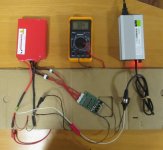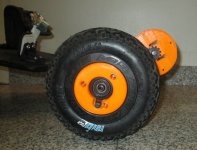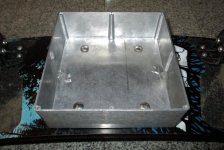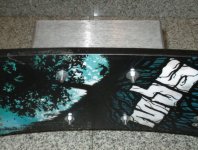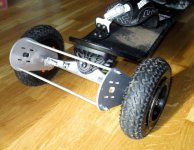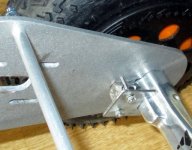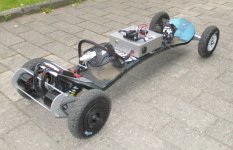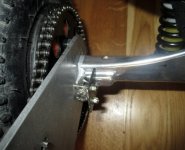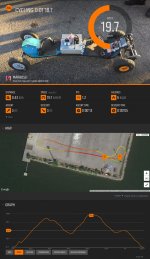RideTheIon
10 mW
I'm excited to start building my first electric mountainboard.
The ESC, motors and battery pack will be arriving in a few days. I took a few pictures of the other components.
Maybe seeing them laid out and later mounted on the board will help someone else out with their own build.
When the build is done, I'll post a complete list of components.
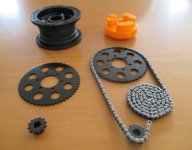
View attachment 2
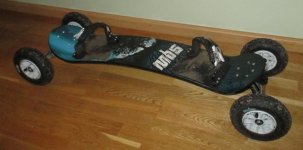
My spirit guide for this build is MrRocketman. Big thanks to him for not just the cool things he does
with electronics+mountainboards, but for sharing the instruction, pictures, videos and 3D-files!
Today I got a print of the ‘Wheel Insert Inside‘. The part fit the MBS TriSpoke hub perfectly.
I'm using a bigger wheel-sprocket than MrRocketman and unfortunately the bolt pattern is also slightly larger.
Luckily tweaking a 3D model is a lot easier than tweaking a physical object.
The holes on the sprocket are also smaller, so I'll have to drill them out to 6 mm.
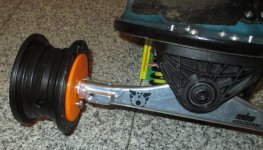
My gear ratio will be 54/12. The motors are 170 KV and the battery is 37 V @ 10 Ah.
I calculate that with 8 inch wheels, the theoretical max speed is 40 km/h.
I'm not sure how much voltage droop I'll be seeing with max load, so maybe 35 km/h is more realistic.
Still need a battery enclosure. I have my eyes on an aluminum case for a local supplier's website.
When I get the batteries, I'll make a last minute measurement that it fits.
Maybe plastic would be smarter with components rated to 200A, but style before safety :wink:
Still haven't decided should I ground the case or not. The circuit breaker will be mounted on the top of that case and I'll
be passing the positive lead though the case, so I'm put off by idea of sharp edges, voltage difference and high amps.
The motor mount I'll figure out when I have the motor in hand.
I have standard MSB matrix trucks. The truck have ~8 mm threads for mounting a brake and smaller holes on the bottom.
I'd rather make a custom part that bolts on rather than crimp on a ready-made motor mount.
I'll post updates of how the build is going.
If anyone has any suggestion or improvements, I'm all ears.
The ESC, motors and battery pack will be arriving in a few days. I took a few pictures of the other components.
Maybe seeing them laid out and later mounted on the board will help someone else out with their own build.
When the build is done, I'll post a complete list of components.

View attachment 2

My spirit guide for this build is MrRocketman. Big thanks to him for not just the cool things he does
with electronics+mountainboards, but for sharing the instruction, pictures, videos and 3D-files!
Today I got a print of the ‘Wheel Insert Inside‘. The part fit the MBS TriSpoke hub perfectly.
I'm using a bigger wheel-sprocket than MrRocketman and unfortunately the bolt pattern is also slightly larger.
Luckily tweaking a 3D model is a lot easier than tweaking a physical object.
The holes on the sprocket are also smaller, so I'll have to drill them out to 6 mm.

My gear ratio will be 54/12. The motors are 170 KV and the battery is 37 V @ 10 Ah.
I calculate that with 8 inch wheels, the theoretical max speed is 40 km/h.
I'm not sure how much voltage droop I'll be seeing with max load, so maybe 35 km/h is more realistic.
Still need a battery enclosure. I have my eyes on an aluminum case for a local supplier's website.
When I get the batteries, I'll make a last minute measurement that it fits.
Maybe plastic would be smarter with components rated to 200A, but style before safety :wink:
Still haven't decided should I ground the case or not. The circuit breaker will be mounted on the top of that case and I'll
be passing the positive lead though the case, so I'm put off by idea of sharp edges, voltage difference and high amps.
The motor mount I'll figure out when I have the motor in hand.
I have standard MSB matrix trucks. The truck have ~8 mm threads for mounting a brake and smaller holes on the bottom.
I'd rather make a custom part that bolts on rather than crimp on a ready-made motor mount.
I'll post updates of how the build is going.
If anyone has any suggestion or improvements, I'm all ears.



